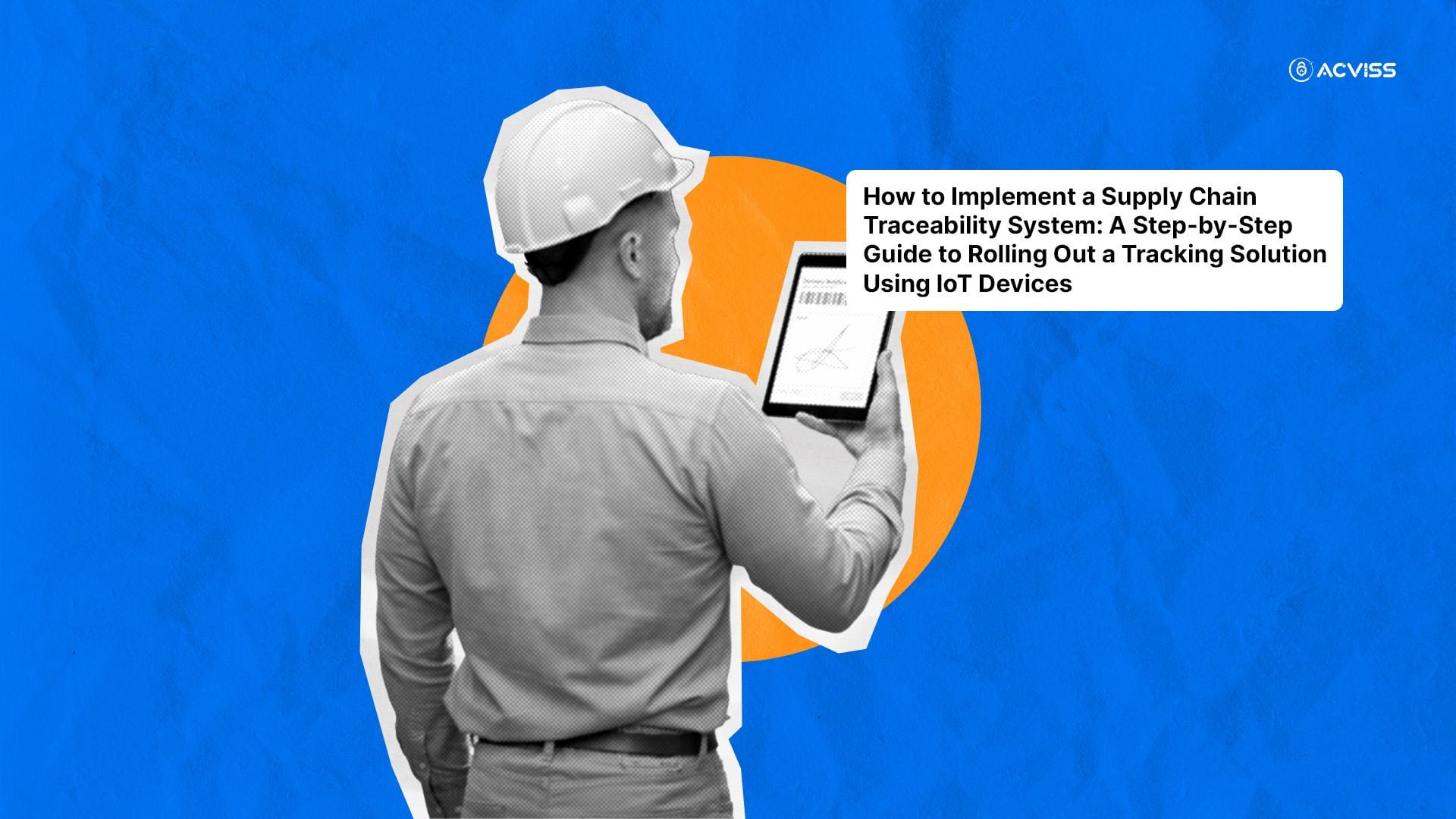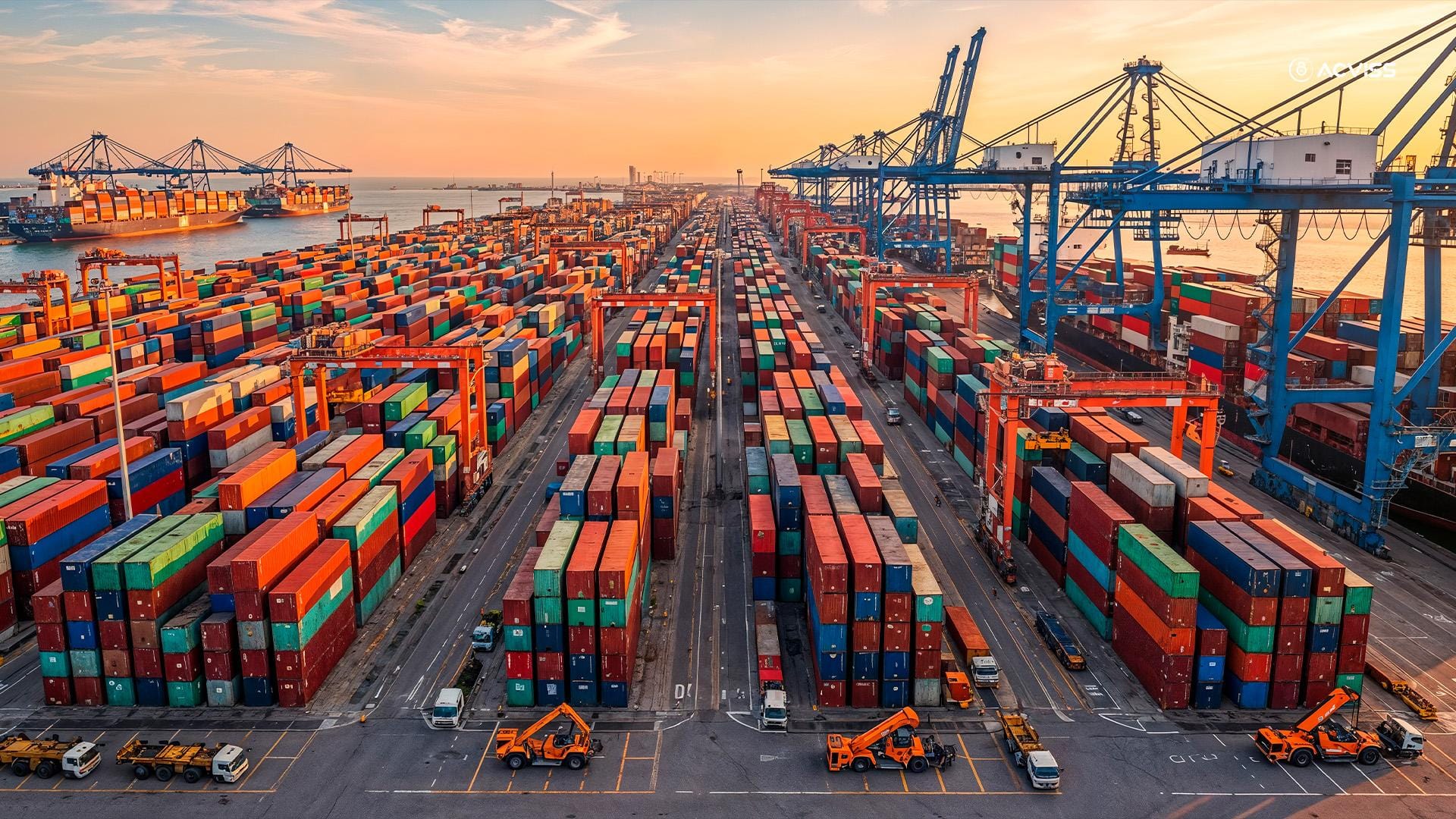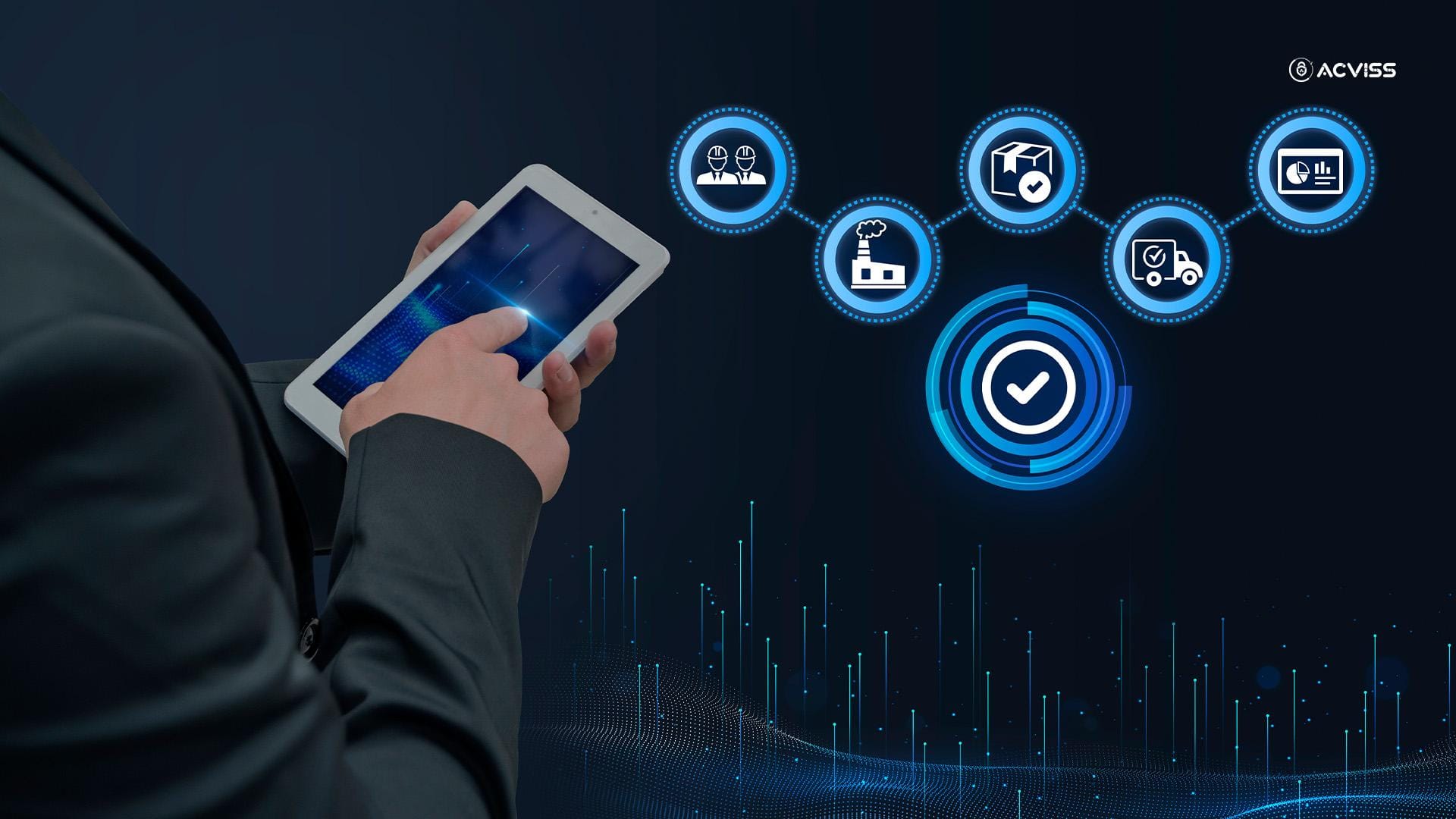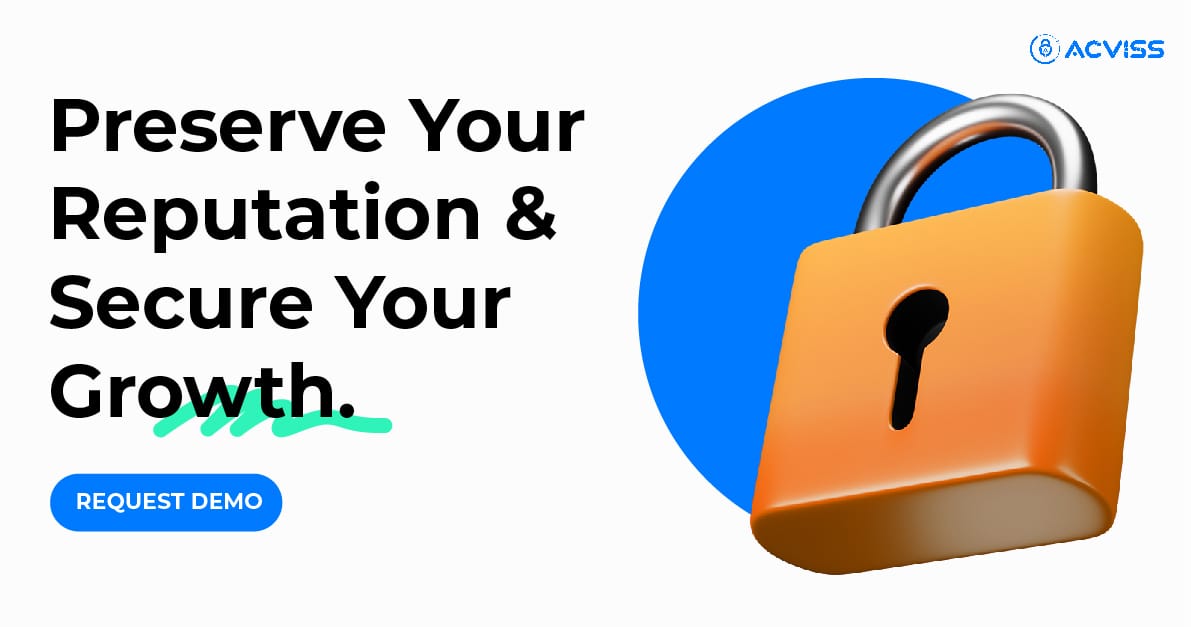How to Implement a Supply Chain Traceability System Using IoT Devices

Supply chains today are more than the backbone of global trade; they are the arteries through which trust, efficiency, and brand reputation flow. Every product that moves from a factory floor to a consumer’s hand tells a story. The question is: how clearly can that story be traced?
In a world where counterfeit goods account for over 3.3% of global trade (according to OECD), and where brand reputation can collapse overnight due to quality lapses or unauthorised distribution, supply chain traceability has evolved from a technical feature to a strategic necessity.
A traceability system ensures that every step of a product’s journey, from sourcing raw materials to the point of sale, is recorded, verified, and visible. When combined with IoT devices, data analytics, and brand protection solutions, it transforms into an intelligent network capable of identifying inefficiencies, preventing counterfeiting, and building consumer trust.
This detailed guide breaks down how businesses can implement a robust track and trace system using IoT and related technologies, step by step.
Understanding Supply Chain Traceability
Supply chain traceability is the ability to track the movement of products, components, and raw materials throughout the supply chain. It enables businesses to know exactly where their products are at any given point and ensures authenticity, quality, and compliance.
Unlike traditional record-keeping systems that rely on paper trails or manual entries, modern traceability systems leverage IoT (Internet of Things), blockchain, AI, and machine learning to collect and store data automatically in real time.
In essence, it’s not just about knowing where your product is; it’s about knowing what has happened to it at every stage.
Why Traceability Matters
- Consumer Trust: Today’s consumers want transparency. Over 70% of global buyers say traceability influences their purchasing decisions.
- Regulatory Compliance: From pharmaceuticals to food and electronics, governments now demand full visibility for safety and anti-counterfeiting purposes.
- Brand Protection: Traceability is a first line of defence against fakes, ensuring only genuine products reach the market.
- Operational Efficiency: Real-time tracking reduces delays, waste, and theft while improving demand forecasting.
Step 1: Define Your Traceability Goals

Before investing in any technology or device, brands must begin by identifying what they want to achieve.
Do you want to:
- Authenticate products for consumers?
- Prevent grey-market diversion?
- Comply with regulatory mandates?
- Optimise supply chain performance?
Each goal determines the type of data you’ll need to collect, the IoT devices required, and the level of integration necessary.
For instance, a pharmaceutical company might focus on patient safety and compliance with DSCSA or EU FMD, while a luxury goods brand might prioritise brand authentication and anti-counterfeiting measures.
Establish KPIs such as data accuracy, product visibility rate, time to detect anomalies, and verification success percentage to measure progress.
Step 2: Map the Supply Chain Network
A traceability system can only be as good as the visibility it provides across the network. Begin by mapping out every entity involved: suppliers, manufacturers, logistics partners, distributors, and retailers.
Identify potential blind spots:
- Are there any points where products are repackaged or relabelled?
- Is there an unverified middleman?
- Are raw materials sourced from regions with poor data transparency?
A clear map ensures that each touchpoint can be equipped with the right IoT-enabled devices or data collection tools to ensure continuous monitoring.
This mapping process also highlights dependencies and vulnerabilities, essential for risk mitigation and IP protection.
Step 3: Choose the Right Technology Stack

Traceability systems work best when multiple technologies function in harmony. The ideal stack depends on the scale and complexity of your operations, but typically includes:
a. IoT Devices and Sensors
IoT forms the sensory network of the system. These devices, such as RFID tags, GPS trackers, temperature sensors, and NFC chips, capture real-time information about location, environment, and movement.
For example:
- RFID tags on pallets can automatically update product location when scanned.
- Temperature sensors can ensure cold-chain integrity for perishable goods.
- GPS devices can prevent route deviations and theft.
b. Unique Product Identification Labels
This is where brand protection solutions come into play. Each product must carry a unique, non-cloneable digital identity that verifies its authenticity.
Solutions such as Acviss Origin provide non-cloneable security labels with cryptographically secure codes that act as digital certificates. These codes can be scanned by customers, distributors, or authorities to verify the genuineness of the product instantly.
When integrated into IoT systems, these labels become the foundational link between the physical product and its digital record, essential for product authentication, brand verification, and anti-counterfeiting technologies.
c. Blockchain for Data Integrity
Blockchain ensures that the data collected at each stage is immutable and transparent. Every transaction or movement of the product is recorded in a distributed ledger, preventing tampering or manipulation.
This decentralised approach also supports trademark protection and enhances brand accountability in regulatory audits.
d. Data Analytics and Machine Learning
Advanced analytics tools process the data collected from IoT devices and blockchain networks to identify trends, predict disruptions, and flag anomalies, for example, detecting counterfeit product movements or unusual temperature spikes during transit.
e. Integration Platforms (ERP, CRM, WMS)
The traceability system should connect seamlessly with your existing enterprise resource planning (ERP), warehouse management systems (WMS), and customer relationship management (CRM) tools. This ensures smooth data flow across departments and partners.
Step 4: Develop the Data Model and Standards
Consistency is crucial in traceability. Before collecting data, establish a data model and labelling standards that define what information will be captured and how.
Key data points include:
- Batch/lot number
- Production date and location
- Supplier information
- Handling and transportation conditions
- Time stamps for every transfer
Adopt international standards such as GS1 for global interoperability. This allows your traceability system to interact with external databases and partner systems without compatibility issues.
Additionally, define data ownership and access rights, who can view, edit, or share data, to protect intellectual property and maintain compliance.
Step 5: Implement IoT Devices Across the Supply Chain

With the architecture and data standards in place, begin rolling out IoT devices across your supply chain.
a. At the Production Stage
Embed unique digital identifiers or security labels during manufacturing.
For example, Acviss’s Yellow label, powered by patented non-cloneable technology, integrates directly with IoT infrastructure. This creates an immutable link between the product and its origin record, ensuring that every unit can be verified at any point in the journey.
b. During Transportation
Equip shipping containers, vehicles, or pallets with IoT sensors to capture data such as:
- Location tracking (via GPS)
- Temperature and humidity levels
- Shock and vibration monitoring
This real-time data helps logistics teams respond quickly to anomalies and ensures compliance with storage or safety conditions.
c. At Distribution and Retail
At warehouses and retail outlets, IoT scanners or mobile verification apps can confirm product authenticity and automatically update records in the traceability database.
Consumers can also participate in product verification by scanning the label or code, reinforcing brand authentication and trust.
Step 6: Build the Traceability Platform
The data collected from IoT devices, sensors, and security labels must flow into a central traceability platform. This is the system’s command centre, where all the insights come together.
A robust platform should offer:
- Real-time dashboards showing product movements, stock levels, and delivery status.
- Authentication modules to verify the legitimacy of products scanned at any point.
- Analytics and alerts for counterfeit detection or route deviations.
- Integration APIs for ERP, CRM, and e-commerce platforms.
Origin by Acviss already combines blockchain-based traceability with AI-driven insights, enabling brands to monitor products end-to-end while maintaining regulatory compliance and protecting their trademarks.
Step 7: Pilot and Validate the System
Start small before scaling. Conduct a pilot programme on a selected product line or region to test how effectively the traceability system captures and processes data.
During the pilot:
- Assess device accuracy and data latency.
- Monitor user adoption rates among partners.
- Identify any integration gaps or workflow disruptions.
- Test product verification and authentication processes.
Collect feedback from internal teams and external partners, then fine-tune the processes, UI, and reporting mechanisms.
Validation at this stage ensures that when the system scales, it operates seamlessly across diverse geographies and suppliers.
Step 8: Scale Across the Network

Once validated, expand the traceability system to the entire product portfolio and network partners.
For multinational or multi-product companies, this may involve:
- Deploying region-specific IoT configurations.
- Establishing multilingual interfaces.
- Integrating with customs or compliance authorities’ systems.
Continuous partner training and communication are critical to maintaining standardisation. Remember, a traceability system is only as strong as its weakest link.
Step 9: Monitor, Analyse, and Improve
Implementation doesn’t end with deployment. Continuous monitoring and data analysis are key to achieving long-term benefits.
Use analytics dashboards to track key performance indicators (KPIs):
- Traceability coverage percentage
- Counterfeit detection rate
- Delivery compliance rate
- Customer verification interactions
Machine learning algorithms can predict supply chain risks, anticipate counterfeit attempts, and suggest preventive measures.
For example, anomalies such as duplicate label scans or suspicious distribution routes can trigger real-time alerts, allowing brands to take immediate action, protecting both revenue and reputation.
Step 10: Extend Traceability to Consumers
Today’s consumers don’t just buy products; they buy stories. A transparent supply chain allows brands to share these stories with authenticity.
Giving customers the ability to scan a product’s unique code, such as the Acviss label, they can instantly access verified details like manufacturing date, location, and authenticity confirmation.
This builds brand loyalty, enhances brand verification, and reinforces a company’s commitment to IP protection and consumer trust.
Integrating reward systems or loyalty programmes into the same ecosystem can further engage customers while providing brands with invaluable behavioural insights.
Benefits of Implementing a Traceability System

Beyond compliance and visibility, a traceability system delivers tangible business benefits:
- Enhanced Brand Protection: Prevent counterfeit and unauthorised distribution.
- Regulatory Readiness: Easily comply with global product safety standards.
- Operational Efficiency: Reduce delays, errors, and wastage through automation.
- Data-Driven Decision Making: Use analytics for forecasting and optimisation.
- Customer Trust and Transparency: Empower customers to verify products.
A 2024 Deloitte study revealed that companies with real-time traceability systems achieved up to 20% higher customer satisfaction and 15% lower operational costs compared to those relying on traditional tracking methods.
Common Challenges and How to Overcome Them
Implementing traceability is a complex transformation, often met with a few hurdles:
1. Data Fragmentation
Different partners may use incompatible systems.
Solution: Adopt open standards like GS1 and use API-based integrations.
2. High Initial Investment
IoT devices, blockchain nodes, and integration costs can be significant.
Solution: Start with a phased approach and scalable architecture.
3. Partner Resistance
Suppliers or distributors may hesitate to share data.
Solution: Build awareness of mutual benefits; transparency improves everyone’s credibility.
4. Cybersecurity Risks
Increased connectivity can expose systems to cyber threats.
Solution: Employ encrypted data transmission and blockchain verification to maintain integrity.
The Future of Traceability
As global trade becomes more digitised, the convergence of IoT, blockchain, and AI will make track and trace systems even more intelligent and autonomous.
We can expect:
- Predictive traceability, where AI forecasts disruptions before they occur.
- Automated brand authentication, where smart contracts validate products instantly.
- Sustainable sourcing verification allows consumers to check a product’s ethical footprint.
In this future, brand protection and traceability won’t just be operational tools; they’ll be fundamental to corporate identity and customer loyalty.
Final Thoughts
Implementing a supply chain traceability system is not merely a technical upgrade; it is a strategic transformation that touches every part of your brand’s ecosystem, from production floors to consumer hands. When counterfeits are sophisticated and customers are informed, traceability is not optional; it’s the foundation of trust.
Interested to learn more about implementing a traceability solution or securing your brand? Get in touch with us today.
